In this tutorial, we learn how to fix a flat with a CO2 cartridge. Start out by grabbing the bag that is underneath your bag, which has everything you need to fix your flat tire. After this, take the wheel off and find out where the hole is located. There will be a hissing sound coming from this spot where the air is escaping. First you will remove the tube from the wheel, then replace it with a new one.
Once you're finished, use a CO2 tube to fill the tire back up with air. Replace this back on the bike, then enjoy riding and have fun!
Want to master Microsoft Excel and take your work-from-home job prospects to the next level? Jump-start your career with our Premium A-to-Z Microsoft Excel Training Bundle from the new Gadget Hacks Shop and get lifetime access to more than 40 hours of Basic to Advanced instruction on functions, formula, tools, and more.
Buy Now (97% off) >
Other worthwhile deals to check out:
All Hot Posts
By Jim Langley
Not long ago, when we were discussing frame pumps and CO2 cartridges, RBR Editor John Marsh shared this ride story with me. Perhaps something similar has happened to you:
Perhaps something similar has happened to you:
“I was with a buddy recently who seemed to have never used his CO2 system before (or I guess it had been so long he had totally forgotten how).
“When it came time to inflate his fixed flat, he actually still had an old, used CO2 canister attached to the chuck – and didn’t really know how to use the chuck, either. He actually cut his hand in the process and froze the chuck onto the canister (which might have explained why the old one was there in the first place!). This is a very experienced rider, BTW.
“The result was that I had a full 10 minutes of standing there holding my buddy’s bike up as he fiddled with the wheel and tire, trying to air it! Let’s offer some tips to help roadies choose and use a good CO2 inflator – and emphasize the importance of knowing how it works before they need it!”
Great idea, John. First, I’ll explain what CO2 inflators are and why they’re so popular, and then offer some tips, including yours.
Well, a CO2 inflator isn’t really an air compressor, because it doesn’t have a pumping mechanism to compress and store air. But it does inflate tires in a jiffy with a powerful burst of compressed carbon dioxide gas. So no pumping is involved. You just connect the CO2 inflator to the valve, release the CO2 and, almost immediately, the tire is fully inflated.
CO2 inflators depend on small metal canisters (also called cartridges) filled with compressed CO2. You want to be sure to get the right size cartridge for your tire size. Smaller ones will fill a single road tire. The larger ones can fill two tires. When emptied, the cartridges are not refillable. Instead, you recycle them and buy more.
Advantages of CO2 vs. PumpsUnlike most manual pumps that are carried in holders next to your frame, CO2 inflators with the cartridges are so small you can easily carry them in a seat bag, pocket or pack. So they’re ideal if you’ve got a road bike you can’t fit a pump on – or don’t want to put a pump on for whatever reason.
So they’re ideal if you’ve got a road bike you can’t fit a pump on – or don’t want to put a pump on for whatever reason.
When you have a good CO2 inflator and know how to use it, you can fix a flat a lot faster than someone with a standard hand pump. So, CO2 is great for events and races where every second counts.
Disadvantages of CO2For shortcomings, the CO2 cartridges are not free, and every time you run out, you need to buy more. Checking a few sources, it looks like the size to inflate a single road tire runs about $3 each.
Also, as John described, CO2 inflators can be a little trickier to use than simple hand pumps. The freezing issue he mentioned is because as the CO2 gas rushes into the tire, the gas becomes ice cold. This can freeze everything the gas touches, causing the cartridge freezing to the pump head and to metal tube valves, too.
Another issue is that the CO2’s speedy inflation can blow a tire off the rim if the tire or tube wasn’t installed correctly. For example, if you rush to fix a flat you might not quite seat the tire on the rim. A common mistake is to have a section of tube trapped beneath the tire bead.
For example, if you rush to fix a flat you might not quite seat the tire on the rim. A common mistake is to have a section of tube trapped beneath the tire bead.
In that scenario, if you used a CO2 to inflate the tire, the tube would likely lift the bead of the tire, expand past the tire and rim and explode spectacularly. And because the CO2 inflates so fast, it would happen so quickly you wouldn’t be able to stop it. I’ve heard the sound likened to a rifle shot.
CO2 bike tire inflation tipsNow that you know what can go wrong, here are a few tips for avoiding trouble and getting the best performance from a CO2 inflator.
In our conversation, John mentioned that he’s a long-time CO2 user, and he noted that the variety of inflators can cause problems. I’ll turn it over to him to offer a couple of tips:
“All of the inflators work differently,” he said. “I’ve had some that are not nearly as intuitive or easy to use as others. That’s why I finally settled on the easiest possible (and smallest!) chuck.
“It simply screws onto the threads of the CO2 canister. Screw it all the way in to puncture the canister top, then unscrew to let the CO2 flow out and inflate the tire. Screw back in to stop the flow. There’s no valve or anything to understand or operate.
“The key – no matter what you use – is to know exactly how to use it on the road. This takes practice using it while safely at home – even if it costs you a couple CO2 cartridges.”
Here’s an example of the type of CO2 inflator John uses, Genuine Innovations’ Microflate Nano.
I recommend buying spare cartridges so you always have some on hand and never discover you don’t have any on the morning of a big ride. Most riders who use CO2 always carry two cartridges (at least) on most rides.
To ensure that you never blow a tire off the rim with a CO2 inflator, check carefully after you’ve fixed a flat that the tube is fully tucked up inside the tire and that the beads of the tire are seated down inside the rim (the beads are the two rounded edges on both sides of the tire casing).
Freezing CO2 is more problematic when it’s cold outside. If it’s not very cold, it shouldn’t take too long for the metal parts to thaw, then you can separate them. Or wait a bit for the parts to thaw and then douse them with water from your bottle, which should be warm enough to thaw them faster.
Last tip! Since I still see spent CO2 cartridges tossed roadside – please remember after fixing a flat to tuck the empty canister away, bring it home and recycle it.
If you’re a CO2 user please share your best pros, cons and tips in the comments below.
On long trips, it is imperative to consider the possibility of the need for repair or replacement of parts on the bike. For example, we propose to consider what to do if it turned out that the bicycle tire is flat? You can buy tires for mountain bikes on the Trialzon website.
The first thing to do is to remove the wheel. To do this, release the brakes, unscrew the quick release skewer, and the wheel should just fall out. For rear wheel punctures, place the bike in the small front ring of the chain and the smallest cog in the back. This will loosen the chain and make it easier to remove the rear wheel. You will also need to move the rear derailleur to allow the wheel to come out. nine0003
To do this, release the brakes, unscrew the quick release skewer, and the wheel should just fall out. For rear wheel punctures, place the bike in the small front ring of the chain and the smallest cog in the back. This will loosen the chain and make it easier to remove the rear wheel. You will also need to move the rear derailleur to allow the wheel to come out. nine0003
Remove the dust cap and retaining ring from the valve tube if you have either of these two things. Remove the tire levers and position them 10-15 cm apart. Hook the tire arms under the tire bead. Once they're in, lower them down to pull the bead over the rim wheel. Depending on your tire, two levers may be enough to release the tire, but some stiffer tires will require three. Run one of the tire's levers around the rest of the tire. pulling the tire bead over the wheel rim as you go. Remove the tube, leaving the wheel on the wheel. Pull the pipe out of the valve first so as not to damage the valve opening.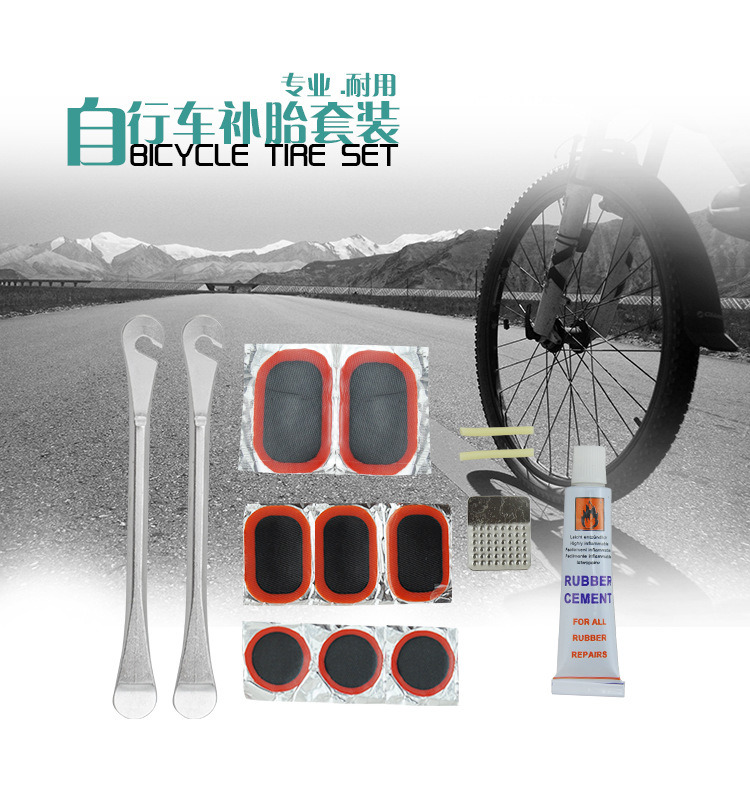 Do not leave the pipe by the side of the road for someone else to pick it up. Either keep it in your shirt pocket or dispose of it in the nearest container. nine0003
Do not leave the pipe by the side of the road for someone else to pick it up. Either keep it in your shirt pocket or dispose of it in the nearest container. nine0003
After the tube comes out, make sure you carefully check the tire for anything that could have caused the puncture: glass, sand, spikes, nails, nails, etc. If you find anything, take it off the tire, but don't think it's... Check the entire tire to make sure there's nothing left in there that could cause another puncture. There is nothing worse than replacing a flat tire and then doing the whole process again 1 km down the road because the piece of glass that caused the first puncture is still there. Run your finger along the inside of the tire, feeling like something is missing should be. Do this slowly and methodically, if something could have pierced through your tire, it could easily do the same to your finger. Once you're sure there's nothing left in your tire, it's time to put in a new tube. nine0003
nine0003
Remove the new tube and put some air into it to give it some shape before trying to put it on the wheel. If you have a hand pump that will help you, if not, just blow it in like a balloon. This will help the pipe keep its shape, make it easier to move around the wheel, and also avoid pinching from getting stuck under the tire bead. Install the valve first and slowly thread the tube under the tire until it is inside the tire and part of the tube is visible. At this point it is very important that there are no tube marks, especially if you plan to use a CO2 cartridge to inflate the tire. If there is any part of the bladder outside the tire, it will expand and bulge when inflated and will almost certainly burst. If it doesn't happen right away, it definitely will as soon as you start riding. Try to put the tire on with your hands and avoid using tire levers unless you have to. Using tire levers will increase the chances of tearing or pinching the new tube. nine0003
nine0003
If so, the process is slightly different but equally simple. Find the source of the flat in the pipe. This can be easily done by inflating the tube and listening to the air coming out. Once you have found the cause of the smoothing, roughen up the surface (most patch kits will come with a small square of sandpaper or other course material). This will give glue and fix something to stick on. Apply glue (if you have one) or remove the backing from the patch and apply to the area. Hold this in place for at least 60 seconds. Once you're sure the patch is on the tube, it's time to inflate. nine0003
Inflate the tube with a hand pump to your desired pressure (or whatever you can get too). Most hand pumps will let you pump up to 80-90 psi, which is more than enough to get you home. If you have a CO2 cartridge, double check that you cannot see the tube and that it is securely attached. Attach the cartridge and let it work its magic.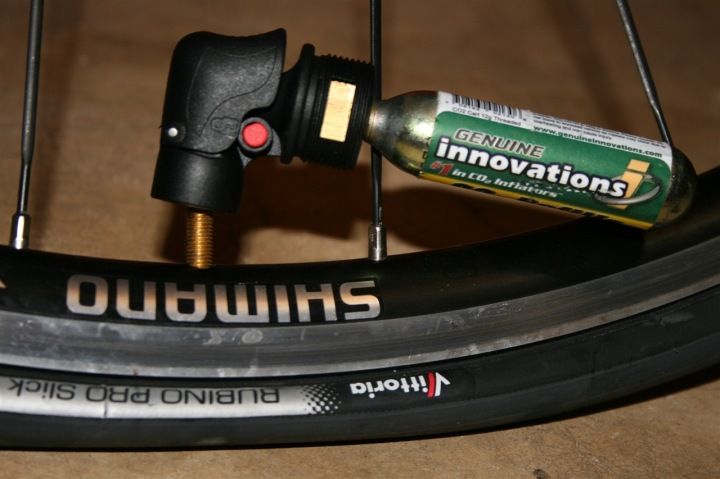
Who would have thought that inflating road bike tires would be such a nerve-wracking affair?
I swear it wasn't that hard when I was a kid.
You see, after a long break from cycling, I decided to take my bike to work last week. I noticed my tires were low and opened up my new pump for the first time.
Unfortunately, I was not able to remove the inner screw with my fingers, and with pliers it seemed that I would break it out. I know that many cyclists can understand. nine0003
The good news is that my son was there to lend a helping hand before the surgery.
And here are the steps we took to pump up my road bike;
1) Correct choice of bicycle pump
2) Determination of the correct pressure in bicycle tires 9000 9000 9000 9000 3) 9) 9) 9) 9) 9) 9) 9) 9) 9)0002 8) Verification of inflation
9) CLASE CART
As you can see, you are not so difficult, especially if you have suitable equipment and equipment all that.
I have been training successfully for the past few days and if you have been struggling to inflate your road bike tires, I will share my experience in the guide below. nine0003
Read more!
Here are some of the basic items you need to know about bike pumping.
Valves are ports or connections between the inner tube of the bicycle and the pump. They provide air inlet and outlet.
There are several different types of valves, but the main ones are:
Presta valves are narrower than Schrader valves with a narrow bore on the rim.
They are also generally longer, making it easier to install the pump.
However, their extra length and lightweight design make them a bit brittle and easier to break.
They are less reliable than Schrader valves and in my years of cycling I have broken a couple of Preston valves more than Schrader valves.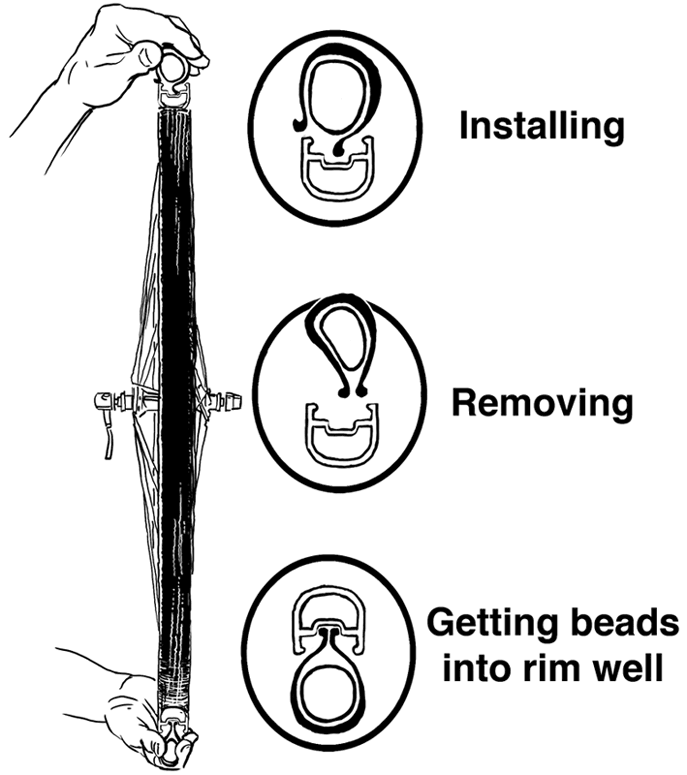 nine0003
nine0003
In addition, they are not compatible with car tire pumps or air pumps at gas stations. For pumping you need an adapter.
But they make up for their short life and incompatibility with gas station pumps by their ease of use.
I prefer the Presta valve to the Schrader valve because it allows for quick and easy opening of the valve.
They do not have a spring in the valve so they are also easier to lower with more positive action. This is especially useful with small capacity hand pumps, as they do not require a built-in spring compressor in the pump. nine0003
Schrader valves are wider and stronger than Presta valves.
They are less likely to break than Presta valves and will last a long time.
They are not as easy to fill as Presta valves. Sure, you can open the valve on the Schrader to let the air out using the tip of a key or your fingernail, but that's just inconvenient.
The smartest part of the Schrader valve is that it has a spring mechanism that keeps the valve closed and air inside. nine0003
This is different from the screw valve on the Presta valve, which means that there is no need to re-screw the valve after inflation because it will not let air out unless it is pressed down.
What else? Another great benefit of the Schrader valve is compatibility with automotive pumps.
Schrader valves do not require special bicycle pumps. This is useful, especially for beginners who do not yet have a complete set of equipment. nine0003
Both the Schrader valve and the Presta valve have their strengths and weaknesses.
They are also designed to be used on different bike tires, so it's not a question of which is better than the other.
The main thing to remember is that the valves have different widths, so it is not easy to replace one with another.
One wheel can only accept one type of valve.
For example, Schrader valves are thick and difficult to fit into the tube hole on a road bike rim. Conversely, the Presta valve is too thin to fit the tube hole on a mountain bike. nine0003
The Presta valve usually requires an adapter to mount to the MTB rim. But there may not be enough room for a larger Schrader valve to fit on very narrow tires.
The difference in valve types means that the pump heads will also be different.
Simply put, you cannot use Schrader pump heads to fill a Presta valve and vice versa.
You can still use a different pump head for a different valve if you have an adapter. nine0003
Another workaround is to purchase double mount pump heads.
Two nozzle pump heads have a Presta bike tire pump and a Schrader head in one unit.
I'm a big fan of dual mount pump heads considering I have both a road bike and a mountain bike.
This saves me the trouble of having two pump heads or buying an extra adapter.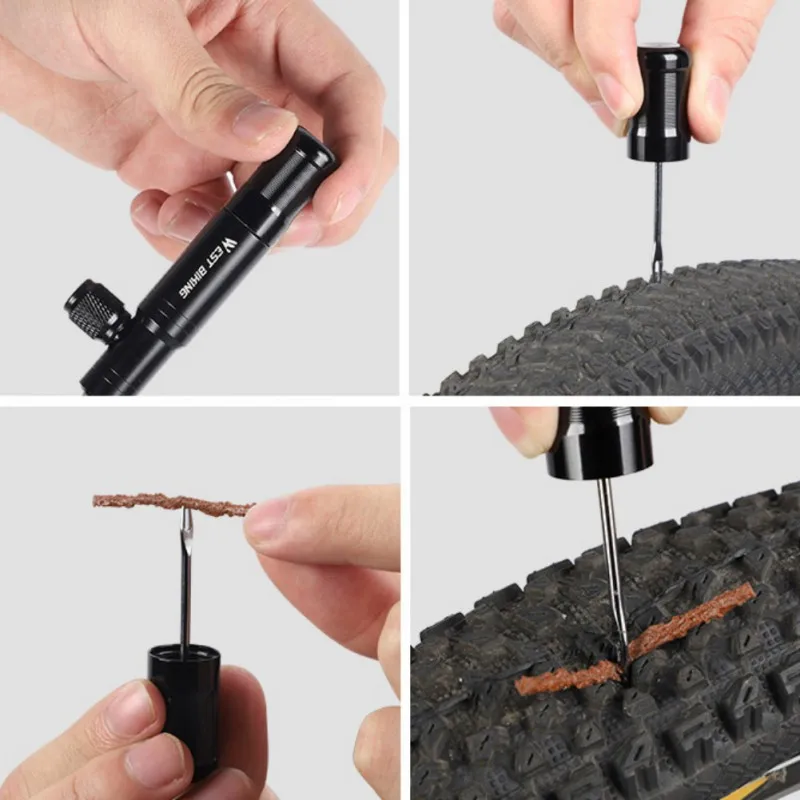
Finally, we have pump types. They will complete our discussion of the basics of inflating bicycle tires.
As the name suggests, bicycle pumps are tools for pumping air into bicycle tires.
We have different options, but the most popular bicycle pumps:
1) caterpillar pump
2) mini pump
3) Air compressor
4) mini inflator
Housing pumping pumping pump , also known as a floor pump, is the most popular bicycle tire pump. nine0003
This is the basic pump that every cyclist should own.
However, floor pumps are bulky, reaching 2 feet in height. The good news is that they have a high inflation capacity, making the task of inflating easier and effortless.
Caterpillar Pump Bike Tires take the hassle out of using smaller pumps.
And as if that weren't enough, the floor pumps come with great features to make pumping easier. nine0003
For example, mine can support both types of valves. Accessible pump heads can also lock onto the valve so there is no need to worry about air escaping.
Accessible pump heads can also lock onto the valve so there is no need to worry about air escaping.
In addition, the best bicycle tire pump has an accurate pressure gauge, so it's easy to read the tire pressure.
The only downside to track pumps is that they are bulky and not portable. They are usually stored in the garage and are ideal for those who stay at home.
Mini pumps are a smaller version of track pumps.
These are portable pumps, ideal for those who need to take the pumps with them on their bike rides.
Mini pumps, also known as compact pumps, are small enough to fit in your pocket and come in handy in the event of a flat tire while on the road.
These compact pumps ensure you get home with a puncture rather than being stuck miles away with a puncture and no way to inflate your tires. nine0003
Mini pumps can inflate bicycle tires at high enough pressures, but they are as good as track pumps.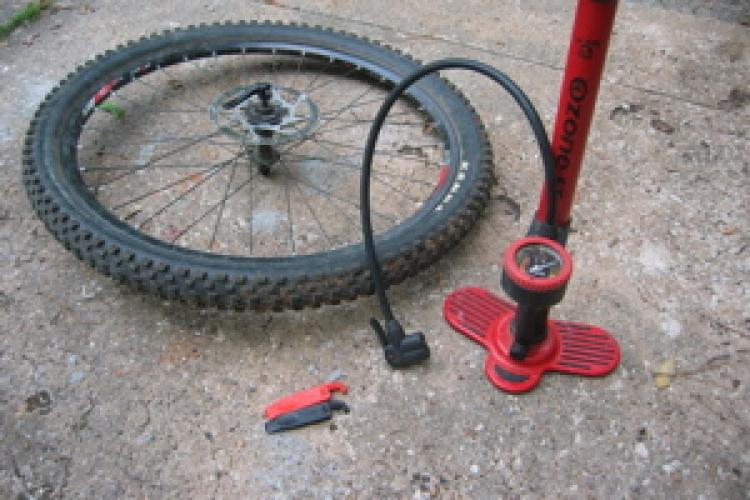
It takes some elbow grease to use the mini pump, but in my opinion I'd rather inflate a tire more than be stuck with a flat tire miles from home.
Our third type of pump is not strictly a bicycle pump.
Mini pump, also known as CO2 pump, uses a CO2 canister to inflate bicycle tires. nine0003
C02 cartridges are typically filled with compressed carbon dioxide for quick, easy and efficient filling.
The main advantage of mini inflatables is that they are ultra-light, so they won't weigh you down on long road bike rides.
Secondly, they are effective at filling bicycle tires and require only a fraction of the effort and time compared to a mini pump or a floor pump.
The biggest disadvantage of mini inflators is that they are disposable and disposable. nine0003
So it only allows you to refill your tires depending on the number of CO2 cartridges you have prepared.
Our final option, the compressor, is rare among casual road cyclists.
Air compressors are expensive and often used exclusively by professional cyclists or team mechanics.
The biggest advantage of compressors is that they make the inflation process quite easy, especially if you plan to inflate to the desired pressure. nine0003
This air pump saves time and makes it easier to inflate multiple bike tires.
Now that we've covered the basics of inflating a bike, let's look at the exact step-by-step details of inflating road bike tires.
The first step is to determine the type of valve that is used on your bike's rim. nine0003
The two main types are Presta and Schrader valves.
Once you have identified your bicycle pump, the next step is to select a pump that is compatible with your bicycle valve.
If your pump is not compatible with a particular valve, consider purchasing an adapter.
After confirming the compatibility of the bicycle pump, the next step is to determine the ideal bicycle pressure. nine0003
nine0003
Proper bicycle tire pressure is critical to avoid bumpy/stiff riding or hard cycling.
I would recommend choosing a bicycle pump that shows accurate tire pressure. This avoids over- or under-inflating your bike.
It is usually easy to determine the correct pressure because most tires have the correct pressure marked on the sidewall. If not, check the exact pressure in the user manual. nine0003
But generally road bikes require higher pressure than mountain bikes. Road bikes need to be stiff enough and minimize ground contact to reduce rolling resistance.
On the other hand, mountain bikes need more ground contact for better traction and overcoming obstacles.
Generally, the recommended pressure range for road bikes is 80-130 psi and mountain bikes require 25-35 psi. nine0003
The dust cap is a convenient addition to the valve port that prevents dirt and debris from entering the valve.
Presta Valve and Schrader have the same plastic cap design.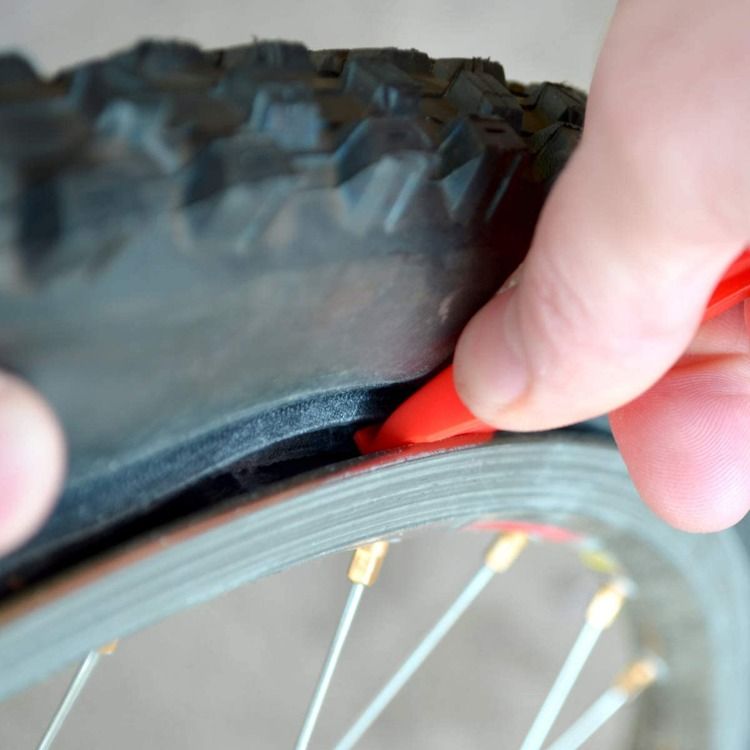
You just need to unscrew the lock nut and remove the cap.
Be sure to keep your hat in a safe place so you don't lose it. I usually prefer to keep mine in my back pocket. nine0003
After you remove the cap, the next step is to tighten the pump head over the open head.
This is more than just putting it on top, but you will need to turn it clockwise until it fits snugly. A good way to know if it's blocked is to feel the resistance.
However, be careful not to overtighten as you may break the valve.
It is also necessary to re-confirm the correct nozzle (Presta or Schrader valve) by pressing the valve. nine0003
Once the pump head is firmly and securely screwed to the bicycle tire valve, it's time to start pumping.
But not now.
Most bicycle tire pumps have a lever that initiates the inflation or inflation process.
The mechanism and instructions will depend on the type of pump.
But usually most track pumps require you to turn the handle 90 degrees and then push the lever on the top of the pump. nine0003
Then you can start to inflate the tire.
But, as I said, specific instructions will depend on the pump model.
This step is the actual inflation.
Normally the inflation action is to move the lever up and down until the tire is full.
You just need to put the pump between your legs, grab the lever with both hands and start pumping the track pumps. nine0003
Conversely, for a hand pump, small pumps or air compressors, hold the nozzle with one hand, pointing it at the nozzle, and pump with the other hand.
If your bicycle tire pump has a pressure gauge, it's easy to determine the correct pressure for your tire.
If not, you can test inflation using your thumbs.
As soon as you inflate and feel that your thumbs can no longer press, the tire is sufficiently inflated. nine0003
nine0003
However, this is usually not the best method because it can sometimes be misleading. In addition, it will also depend on your physical fitness.
Another thing is that different tires have different pressures. What works for a road bike may not work for a mountain bike.
After pumping is complete, remove the pump from the valve.
Removal is the opposite of pump installation. For example, if you have a pull-up lever, you just need to press it. Plunger pumps may require a few pushes to remove the pump. nine0003
Remove the valve stem from there.
You may also hear a hiss when the tire is removed. It's excess air, usually in the pump, so it's normal. This will not affect the overall PSI of your tire.
It is easy to check the exact level of tire pressure if you use a digital pressure gauge.
Checking the correct tire pressure and correct tire inflation is especially useful for cyclists who are looking for comfort and excellent driving performance. nine0003
nine0003
However, it is important to note that different bicycle tire pumps have different scales, so you need to be especially careful.
Another precaution to consider is that dirt and debris on the valve and pressure may affect the accuracy of the dial.
Now, if your bike tire is overinflated, you can relieve the air pressure a little by opening the valve.
If you have a Schrader valve, you just need to press it with a wrench or fingernail to release the air. In the case of a Presta valve, simply open the plastic caps and press the nut. nine0003
Once you've made sure your tire is inflated to the correct pressure, the next step is to close the valve to prevent air leakage.
If you have a Presta valve, start by screwing in the lock nut until it is tight, then put the cap back on.
With the Schrader valve, you just need to put on the dust cap. It doesn't matter if you leave it open because Schrader pumps don't lose air until the valve spring is pressed. nine0003
nine0003
But it's always good to have a cap to prevent accidental pressure or getting dirt and other debris on the valve.
Inflating a Presta valve is no different from a Schrader valve.
However, you will need a Presta valved pump.
The key to inflating a Presta valve is the pump head insert.
You start by removing the valve cover and unscrewing the lock nut. The next step is to position and insert the pump head. nine0003
The hand pump is one of the traditional and popular ways to inflate road bike tires.
It offers a simple and fairly easy way to inflate a tire.
Here is a step by step guide to using the hand pump:
1) The first step is to find a flat and level surface. The tires should be straight and vertical away from you.
2) Attach the pump head to the valve. Make sure the nozzle is securely attached. nine0003
nine0003
3) Place your hands on the pump handles and start pumping.
Tubeless tires differ from conventional tires in that they do not have inner tubes.
They also don't use traditional bicycle pumps, but instead use air pressure. The inner tube is filled with sealant to prevent punctures while riding.
Here is a step-by-step guide to inflating a tubeless bicycle tire:
1) Purchase an air compressor with an appropriately sized blower head. The inflator head should also have a valve core remover to easily remove the valve stem core.
2) Position the inflator head over the valve of the inner tube. Make sure it is properly aligned for easy screwing in and out of the stem core.
3) Apply pressure to draw enough air.
4) If you feel that the tire has become hard and you can squeeze it more, remove the valve stem core and then remove the pump while holding the compressor firmly with your other hand. nine0003
nine0003
If you don't have a valve stem remover, a coin or small key can be an ideal replacement.
Proper tire inflation is essential to keep tires from feeling hard or bouncy.
Ideal tire pressure should be between hard rock and spring pressure for optimal performance and comfort.
There are several ways to determine the ideal pressure or how much air you need for your tires. nine0003
You can check the manufacturer's manual. Alternatively, check the pressure with the pump gauge.
The last option is crude and involves reading tire pressure with your thumbs.
I am not a big fan of the latter method and I would advise you to find a positive pressure pump with a pressure gauge for accurate pressure readings.
If your tire is under-inflated, you can add enough air until it reaches the correct pressure. nine0003
This will depend on the frequency of use.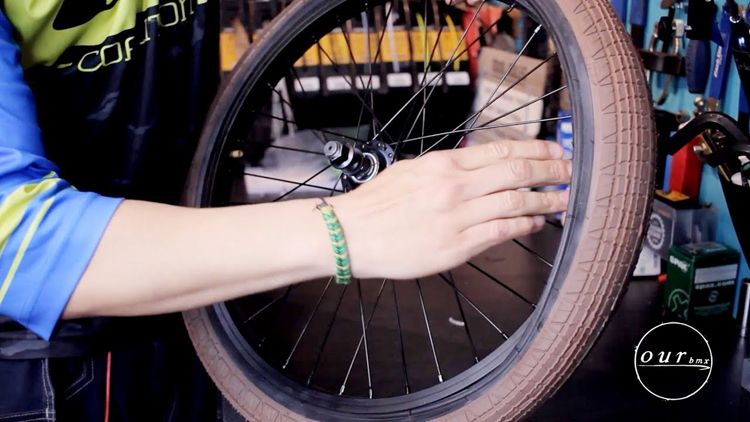
However, for most casual riders, you can inflate tires every two weeks.
Proper tire pressure will save you from pinching from time to time.
Proper bike pressure is even more important for racing bikes because it can affect comfort and speed.
The last thing to consider when choosing tire pressure is temperature and environmental conditions. Tire pressure will increase or decrease depending on available temperatures. nine0003
Therefore, always check the pressure after driving for a couple of hours.
This is everything you need to know about inflating a road bike tire.
Make sure all equipment is ready before starting the process. More importantly, make sure your equipment is compatible with your bike system.
Finally, keep your tires inflated correctly. Properly inflated tires are comfortable to ride and optimized for performance. nine0003
Sharing care!
I am an assistant editor from South East Asia who has traveled all over the world. I mainly cover LATAM timezones by managing the content here. On weekends, you'll see me watching Grey's Anatomy and lots of Netflix sentimental dramas, or munching on the dishes I'd pass out from MasterChef.
I mainly cover LATAM timezones by managing the content here. On weekends, you'll see me watching Grey's Anatomy and lots of Netflix sentimental dramas, or munching on the dishes I'd pass out from MasterChef.
First and last name nine0003
Email the address
Text of the appeal
FINANCIAL AND MEDICAL DISCLOSURES
HobbyKraze is a member of the Amazon Services LLC Affiliate Program, an advertising affiliate program designed to provide website owners with the means to earn any advertising fees through advertising and links to amazon.uk a website that may be linked to the Amazon Service. Affiliate Program Ltd. As their partner, we earn on eligible purchases. nine0003
The information contained on this website does not constitute medical advice and is not endorsed by medical professionals. All content on this site is for informational purposes only.